Of Curtains and Orange Sky
On the sadness of blackout curtains and blocking the light, with a sidestep to September 2020.
If you asked me if I care about the curtains, I would probably say no. Not really. If you asked me to tell you what the curtains look like in one room or the other, I probably can’t describe them other than maybe a general sense of the color and loose pattern. Who knew such history is stored in curtains?
(Click here to skip the intro.)
“Summer has come and passed
The innocent can never last
Wake me up when September ends.”
Green Day
Happy Sunday!
I almost put the letter today at the bottom. The letter is an introduction, almost always written last, but it took on a life of its own. This is often the case.
I advocate jumping around in whatever way feels comfortable. If you don’t think you have the stamina for the whole thing, skip to the main essay. It is an assemblage of overlapping curtains, orange sky, and Covid that I didn’t expect.
Today:
After writing today’s letter and feeling disappointed in myself that, once again, I tipped over some cliff that I didn’t even know was there without having any understanding of how to pull the ripcord or control the paraglider, I ran across this phrase: “Why are the curtains blue?”
I was, of course, looking for quotes I might weave into this letter because quotes add texture. It turns out that lyrical quotes about curtains are not abundant. Instead, I kept running into “Why are the curtains blue?”
This appears to have been a meme somewhere along the way that suggests that English teachers manipulate their readings when they, for example, interpret blue curtains as being related to a certain emotion or state of mind. The stereotypical student in this meme conversation argues that the curtains are blue simply because they are blue.
What about metaphor?
What about simile? Analogy?
What about carefully constructed descriptions,
stacks of words that
both sing
on the page and
create an image
in your mind that
potentially has something
to do
with the meaning?
What about texture and nuance and the fact that curtains can be any color, and we make choices, when possible, about what we have, what we hang, how we filter our light and our view?
What about words that can be interpreted in many ways, words that have multiple meanings? What about the possibility that writers sometimes don’t know fully what they have revealed, what has come through the spaces in between, through the words, through the cracks? What about the unavoidable reality that we read with the context of our lives, our histories, and our now contributing to the lens?
We neither read nor write unencumbered.
This unexpected discussion of overreading (or reading into) was eye-opening. This is a discussion about projection, about interpretation, and about the richness of language, the ability for a few words to hold so much more.
It’s been a lifetime since I left the ivory tower, but the balance between reading at face value and overreading was everything to me. The ability to interpret meaning based on even the smallest of signifiers, like the choice of “blue” or, gasp, the decision to have no curtains, or the decision to write about the curtains in a letter, was at the heart, for me, of literary analysis and deconstruction. It seems so very sad to simply assume that word choice doesn’t matter, that writers aren’t intentional and meticulous and masters of weaving. It seems naïve to think we don’t bring our own lives into the reading and into our interpretation.
I want to live in a world where thinking about why a writer said the curtains were blue matters and where there are readers who do think about why the curtains are blue or not blue. In my story today, the curtains are white or clear or transparent or translucent or dingy or yellowing or fading. They are white, but not starkly so. They are not cream. They are not beige. Maybe they are ivory? Eggshell? Ecru? They are not lace. I guess they are embossed. I don’t love the word sheers. Finding the right terms was elusive.
What I know about the curtains is that when the light shines through, they bring a smile. They are a perfect counter to the greens of the trees on a quiet morning shrouded in fog, a soft frame when there are unbroken patches of blue between the branches.
We don’t have many signs of fall. The seasons slide in and out, with things blooming all year long. There aren’t really any anchors for me in September, but I realized one morning this week that I do see the change, even from my chair in the living room looking out the window, I see it. I see the shifting of light. The gold wash on the trees in the evening is different. I feel the shortening of the day. The morning I first started this letter dawned cool after a week of heat, heavy with fog.
On the heels of The Great Pottery Throw Down, I switched to Portrait Artist of the Year, with Miyazaki’s The Boy and the Heron as a palette cleanser in between.
One of the things they often say on Portrait Artist of the Year after announcing the winner of the week’s challenge is some version of “our commiserations to those who lost.” That phrase catches me every time. It isn’t how I think of the word, but then I don’t think of it as a noun.
I found myself wishing this week that I had someone to commiserate with. The verb.
I sat down to write about trees. But you can’t see the trees without first looking between and past the curtains. Sometimes you look beyond, and sometimes you look at the foreground.
Thank you for reading.
Amy
💭 View in a browser or in the app for the best viewing.
🔎 A note about journal pages. There are a number of illustrated journal pages shown below. They give visual texture to the timeline. The post doesn’t come with a magnifying glass. The pages are simply part of the record. At the time, they were a lifeline, a daily project to sink into. Looking back, they offer some of the nuance of the days. That summer, on the heels of finishing my year of 50 Before 50 documentation, was the start of Illustrate Your Week, similar to the way I do it now. The pages are a bit gritty, a bit moody, a bit messy, and true to me. (I do think I need to be back in a larger sketchbook.)
Illustrated Journal, Week 37 of 2024
Unfinished pages from the week.
Signs of September
I am looking at the trees, thinking about September. From where I sit, I can look out the window to the trees that are just beyond the fence that continues to fall over. Up high, I can’t see the fence. I can pretend that isn’t happening. I look out at the trees as if I could touch them.
A slight shift brings my eyes to the foreground, back to the curtains that create portals for looking, for seeing the white of the fog, for catching the momentary glints of sun that hint at the burning off that will happen, for watching the light slicing across the trees as the sun sets over the ocean.
We can either look through and beyond, the curtains falling out of focus, or we can look at the curtains. We may see both the curtains and the trees at the same time, but there is depth. Our eyes will focus near or far.
The curtains are open again, partly. The side panels are still stretched, but each of the two middle panels has been pushed one way or the other, collapsed, an accordion of rumpled lace. Having them closed during last week’s heat left me feeling like I was crawling the walls. They became the yellow wallpaper. They blocked the light. They made this growing isolation even more tangible. They are open now, haphazardly bunched so that there are two openings through which I can see the trees.
The floral embossed panels are dingy. The bottom edges are frayed and yellowing, but they remain willowy in their own way, willowy in that they remember being new, in that they know they were made to be willowy, in that they have stretched across this space for years, softening the light and framing the view. Like most things in the house, they are older than the children, both of which are grown. There are photographs of them with binoculars looking out this window, through these curtains.
The curtains are old, but they still sway a bit in the wind. They haven’t given in to their own decline, haven’t accepted the yellowing, the stiffening of their fibers. Like the kitchen curtain, these might shred if I put them in the machine. They could do with a soak, with a freshening, but getting them off the bar they are on isn’t a one-person job. I’m afraid washing the sheers might leave them in tatters, but I am equally afraid the bar, which stretches across the window that turns this house into a treehouse, the window that makes this room magical despite the mess, might break if touched. As my anxiety grows, I worry about the window itself. The house is full of noise, above and below. Everything creaks and groans. There are visible cracks.
Lifting the bar to take down the curtains would require three sets of hands. There is always a bit of a bow to it, a reminder of the distance, of the stretch, of the join we MacGyvered in the middle when we didn’t know how things age and fall apart.
Blackout
The curtains are open, which unlocks the view. Even where they are bunched, they should be light and airy. They should dance. They should delight in their game of hide and seek with the trees beyond, but they have been reigned in.
I’ll never get used to the opaque stripes the blackout curtains create. The lace panels are old and worn, but the blackout curtains deepen the dingy tones. They are somewhat grey. They make solid that which should be sheer.
I hung them several years ago. M was in the hospital. The heat had been unbearable in the house, and I knew the picture window, which brings in the western sun, was cultivating the greenhouse of afternoon.
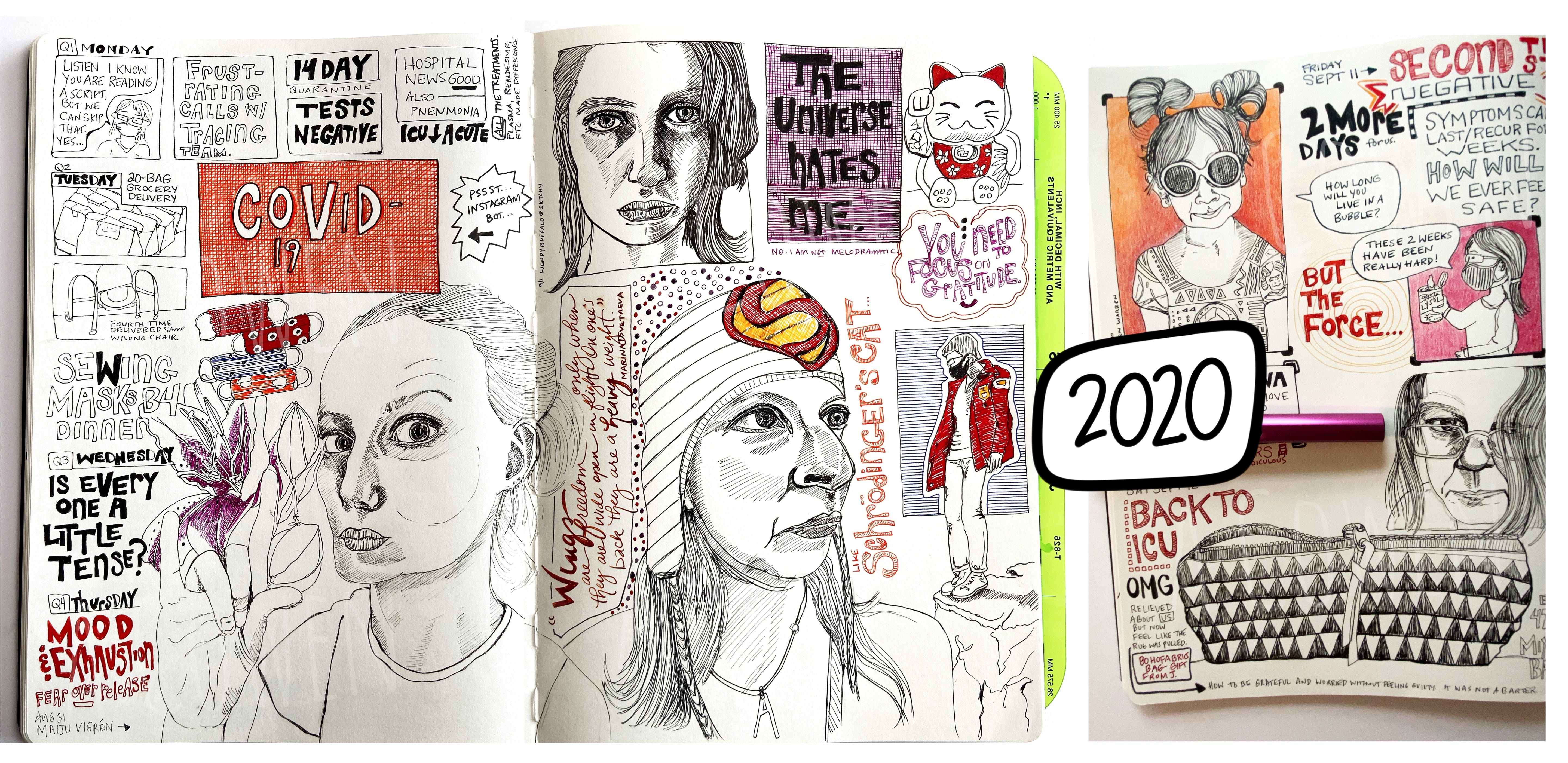
Research suggested blackout curtains were a necessary step in the face of climate change, a step up from aluminum foil, something we used to laugh about in the clauses of an apartment rental. I needed to do it on the cheap, and I did. Four inexpensive panels. I used flimsy tension rods on the small side windows. The side panels can move independent of the blackout curtains. But across the middle, the blackout curtains hang from obnoxious metal rings that look like they belong in the shower. The rings alternate with the tab tops of the sheers. The two sets of curtains are entwined. They now have to move together.
It all made sense. There are days when the house becomes unlivable, and yet we have no choice but to live in it.
I know she didn’t like the blackout panels. She probably only saw them fully drawn a few times. She didn’t spend that much time in the main room in the last few years.
Orange Sky
This week, there were lots of photos shared by people marking four years since we had a full day of eerie orange sky in San Francisco. A day that was dark, a day that was preternaturally orange.
I saw those photos and thought back on that weird day. I remembered, too, that M was in the hospital. I told her about the sky over the phone. The dark day was unnerving. She could see some of it, I think, from whatever room she was in. I don’t know that room because that was Covid year.
A round of sudden illness led to sepsis and a fall and a broken foot and an ambulance ride diverted to a different hospital where they chased issues and created new ones.
After a week, they sent her home, too weak to stand, unable to get herself up and down or in and out of the bed, a chair, the toilet and with instructions not to put any weight on the foot for six weeks. A series of wrong bedside commodes were delivered while I waited for transport to bring her home. I didn’t know how we were going to manage.
She was home for less than twelve hours before she was septic again. Thankfully, the ambulance that time took her to our preferred hospital. (Getting to the right hospital became increasingly difficult over the years, something we couldn’t control.)
That admission turned out to be Covid, which she had evidently picked up in the hospital. She was in the hospital for most of the next month. It was the height of the first year of the pandemic. People with her health issues didn’t necessarily survive. At the time, it seemed a miracle that she did.
The day it stayed dark all day and the sky was orange was that year. It’s funny the things we forget.
Seeing the orange sky photos circulating this week, I thought about that day, and I tried to piece together the timeline. We weren’t able to go to the hospital, but we did go out for our Covid tests the next day, a day on the fringe of orange, ash falling from the sky. I remember us getting into the car, ash on the windshield, driving across the city to the dystopian drive-through testing tents. Those must have been our “after x days” tests. I had helped with the bedpan. There had been hugs with the boys. The city, at that point, was tracking. They required us to check in each day for two weeks to report any symptoms. They required a retest for us to be released from quarantine.
The blackout curtains were the same year. I didn’t remember that initially. Thinking about the timeline, about September and hospitalizations and years, I started looking. I found one or two emails to family about the hospitalizations. I checked my Amazon order history.
I’m glad there are some records. With so much lost to texts, there are so often no clues, no records to help me piece things together. This fragmentation of memory has always been a point of sadness. It isn’t something I will get over. It isn’t something I can simply ignore. Not being able to remember is disorientating. It destabilizes everything. It leaves me flailing. I know only who I am in the moment. That there is just darkness behind me, just bits of light here and there, hazy, fuzzy, and little else, is overwhelming.
I am always trying to outrun, outsmart, outthink the encroaching nothingness that is always coming up from behind, erasing, eating, blurring the years, the stories.
What color were the curtains in that apartment? Or that one? Or that one? I have no idea.
Last year, too, there was a hospitalization in September, and all of October. And then again in November, in December, in January, and in February. In May, the trip to the hospital was not an emergency. I drove. She walked in.
I sat down today to write about trees. But I can see the trees only because the curtains are partly open. And so I got stuck there, my eyes following the embossed vines, some sections light and some, blocked by the liners, opaque.
The blackout curtains are terribly ugly.
The layering of Septembers leaves me dizzy. I wish I could piece them all together and see the overlay. I need to be able to go back more than four years. I need a stack of transparencies I can lay, one atop another, and peer through time, seeing how things lined up, how so many days pooled into nothingness. It’s something I have no way to get. I can’t reconstruct the paper house. I can’t stretch a timeline of all the years and when it all started and how things cycled.
I can’t remember buying the curtains, picking them, debating patterns. It’s just one giant blur, brush marks of the forgotten that compress time, throw shadows, and make it impossible to find the likeness or the handholds.
Draw Your Curtains
The prints and fabrics and colors that define our spaces say a lot about our lives, about our aesthetic, about our compromises and concessions, about our hopes, about the ways in which we respond to space, to light and dark, to the contours of a room.
I don’t particularly want to draw these curtains, but I do know they are one of several patterns in the house that I hold close. Many of you know how much I miss the warm gold chairs with the poppy flowers. I seem stuck in a time warp of pattern. I remember and miss the soft red and cream buffalo check, too.
There are prints in these rooms that I love, especially in the William Morris florals in the office, on the curtains and rug. There are patterns on quilts around the house. The warm tones of my son’s oil paintings fill surfaces, lending, not pattern, but color and depth and light to the space. They are a pattern of their own.
The black and white polka dot square planter with red feet holds a dusty flower arrangement. The polka dots are oversized. The piece might as well have grown from the mantle itself. It is such a part of this space. It holds the palette that has slowly been lost as things wore down, broke down, and were replaced. It holds the poppy chairs, the red couch, the green of the trees, the soft and yet bold whimsy of the dots.
What patterns define your space? How new or old are they? What is the palette? Which patterns will stand the test of time?
Try this: Draw or list five of the patterns in your space, either in a single room or in the living space as a whole. Make a series of thumbnails, patterns in boxes, or let them free flow and overlap. Capture the lines in black in white, or capture the palette, the play of color.
Patterns might appear on curtains, pillows, blankets, chairs, couches, rugs, or even tea towels in the kitchen. Maybe there is a wallpaper, peeling or not, with a pattern. Maybe there is pattern on a planter or a bookcase.
Are there things you want to change? Or is this a set of colors and patterns that define you, that comfort you, that provide the backdrop against which you live and love?
Are there patterns you remember that you miss?
🎯 The Sunday post is free to all readers. Thank you to those who have upgraded their subscriptions or made a donation to support my work in this space.
Weekly Bits and Pieces
Made It?
Thank you for reading. I appreciate your comments. Let me know what stands out for you, what you think after reading, or where we connect.
I invited writers to share portraits I might draw in October. Since my notes are seen by about three people, I have had three people express interest.
I am grateful for readers like you.
Next week, I think I’ll just review a book. Or make a list.
Thank you for reading Illustrated Life. Please consider subscribing to receive the weekly letter. Writers need readers, and I am grateful for every reader!
Paid options are available for those who can and want to support the Illustrated Life, the podcast, and the weekly #illustrateyourweek prompt series. Subscriptions not your thing? One-time donations are always appreciated.
This will seem odd, but in randomly pulling a few things from a shelf today, I pulled out an old steno pad, thinking it might be something I could toss. Today’s post was already written, so it was beyond weird to see the first three pages had some abbreviated medical notes…and a room number that I had just seen in the journal pages from 2020 (one I don’t think is shown here). Looking more carefully, I discovered that I had randomly pulled notes from phone calls taken during the first of those hospitalizations. I had no idea there were notes. There were dozens of calls like that. To have pulled those out today from a nonsensical shelf really felt uncanny.





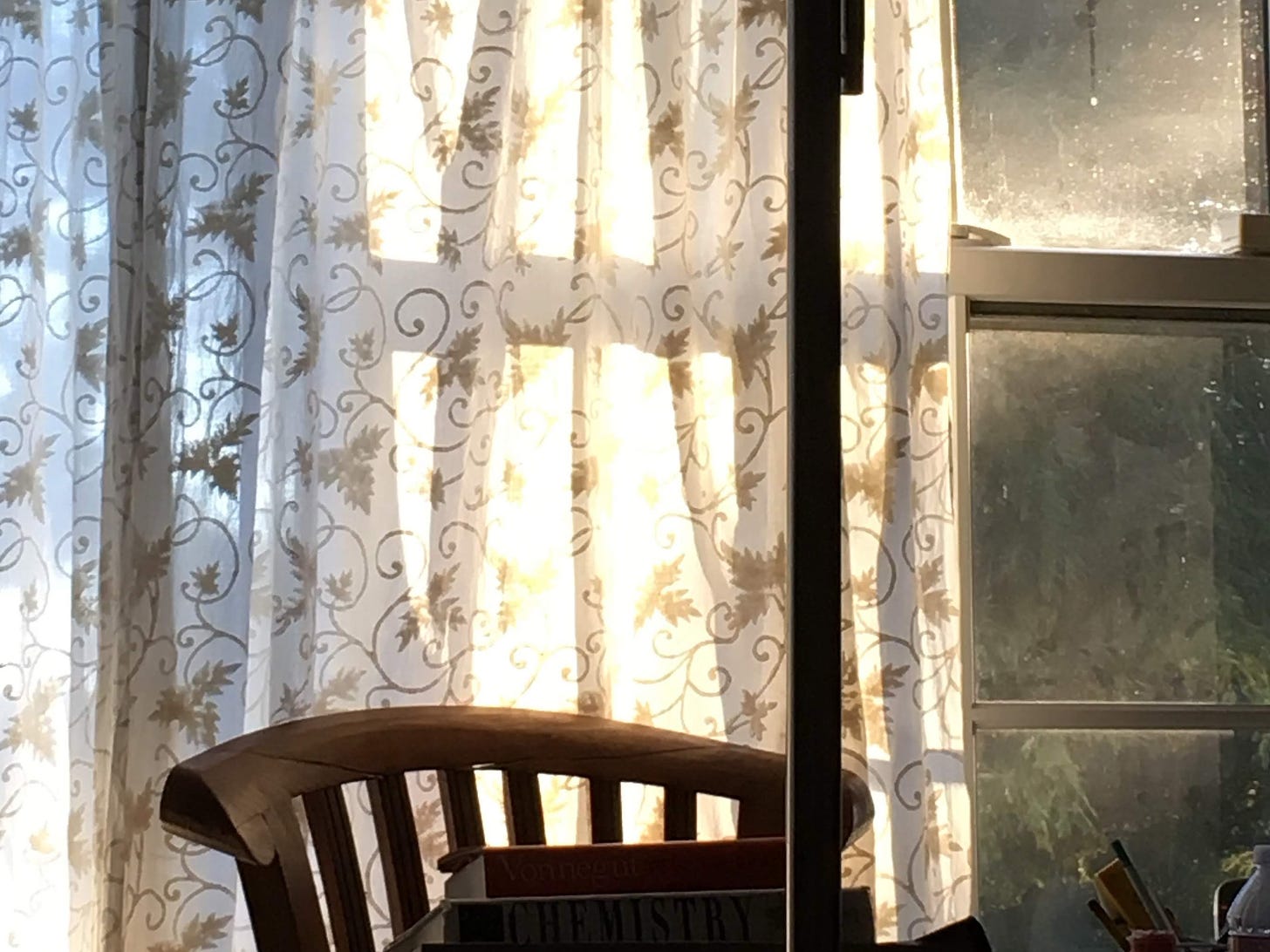

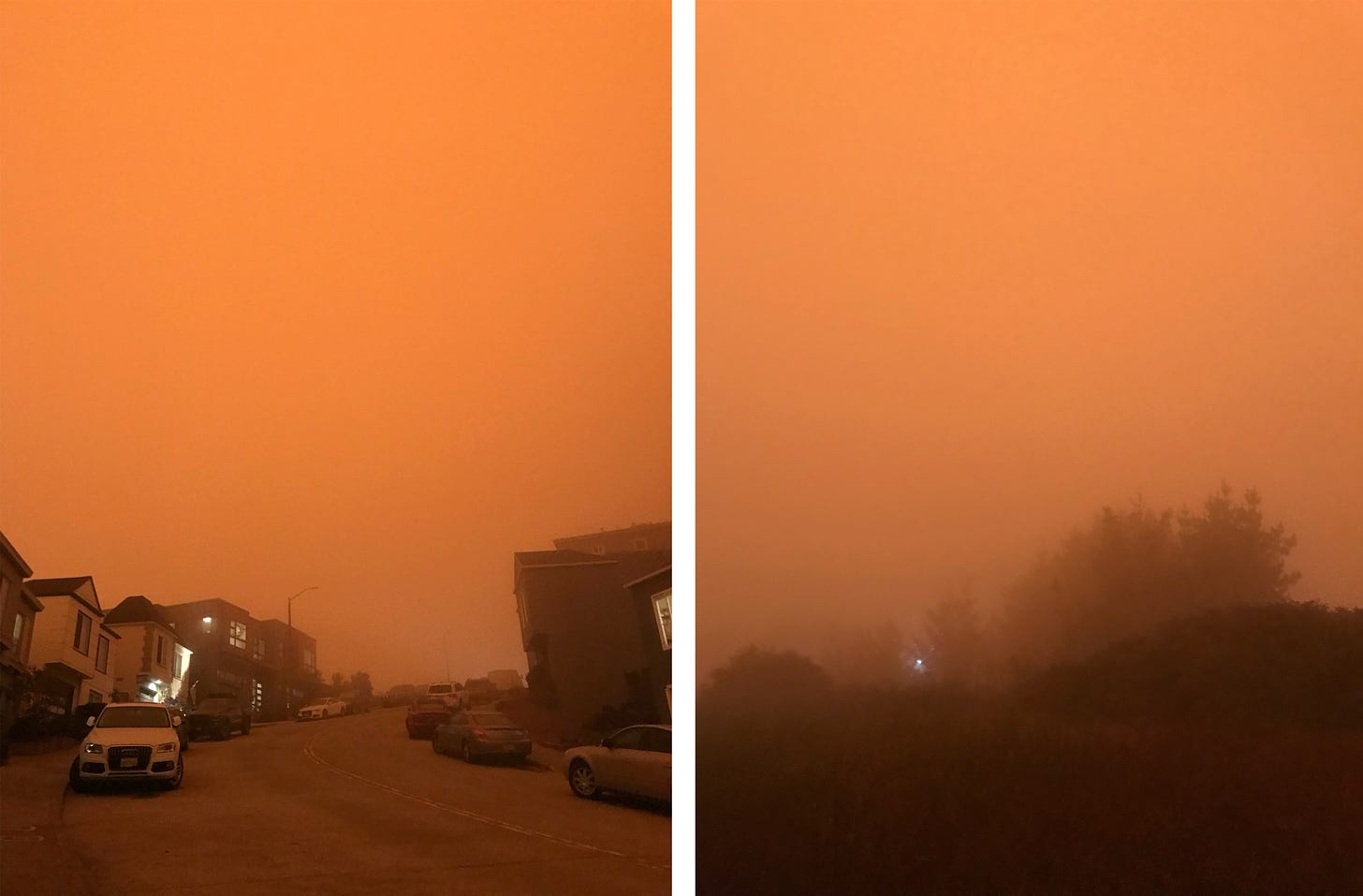
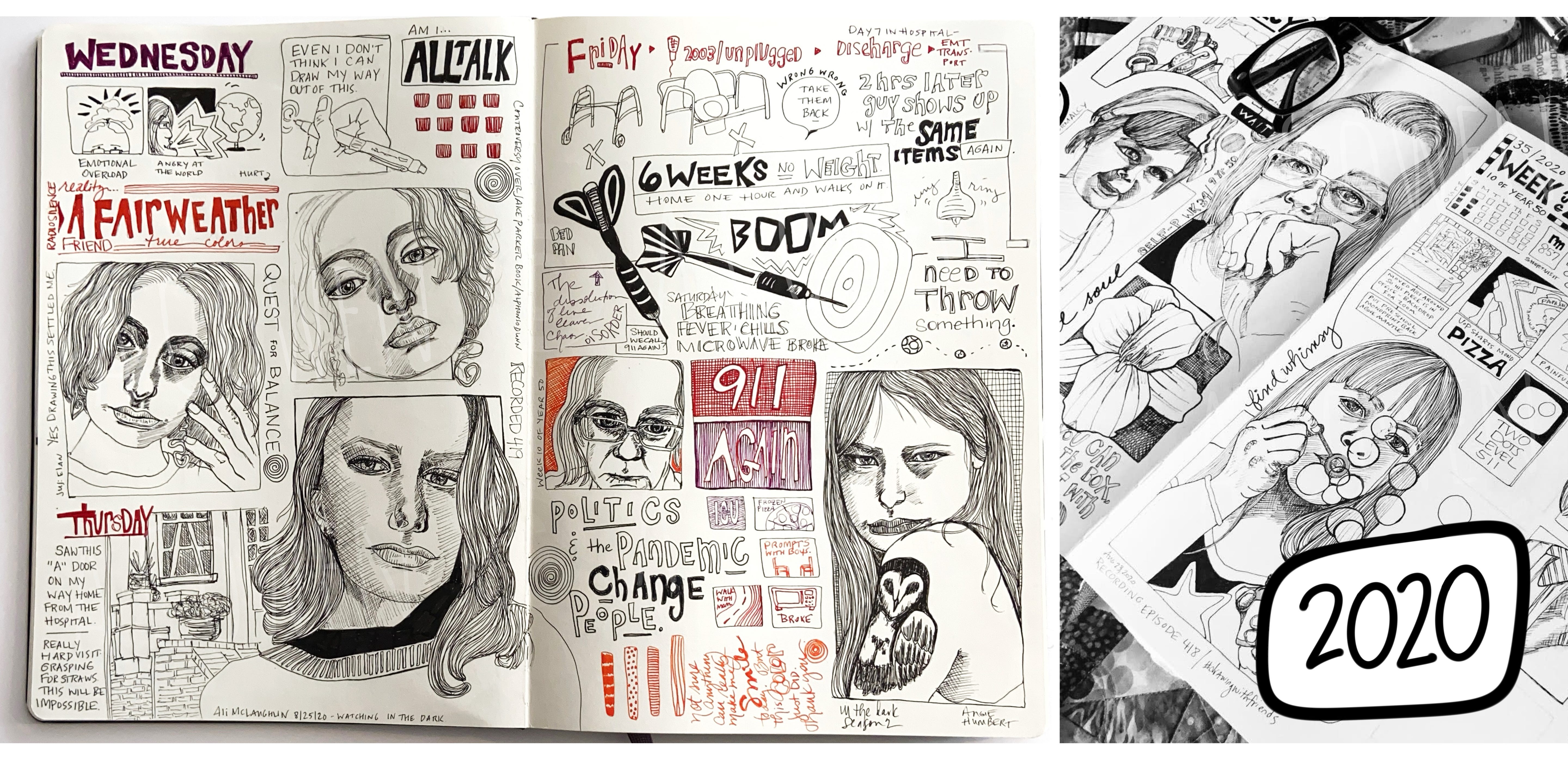
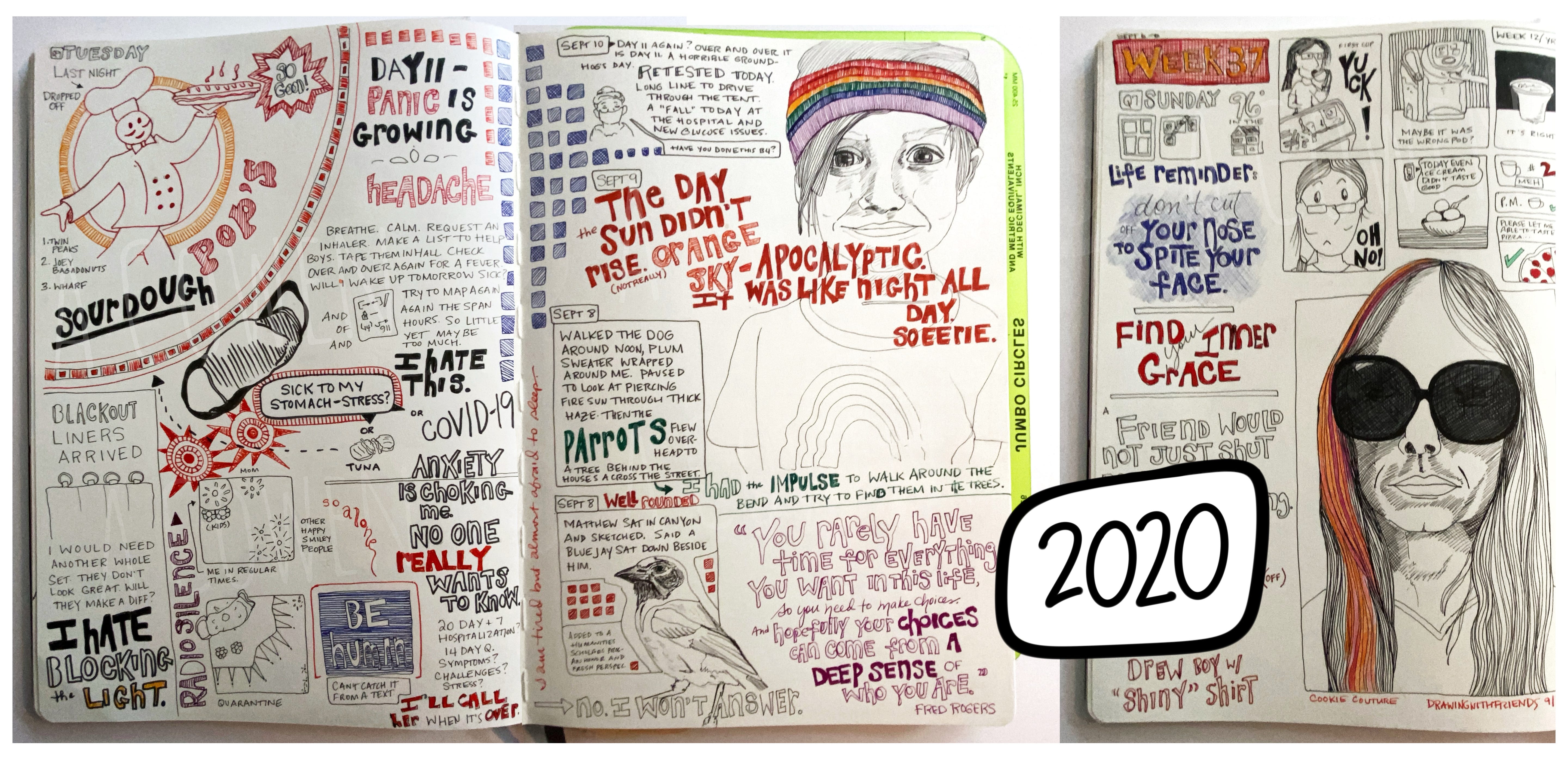
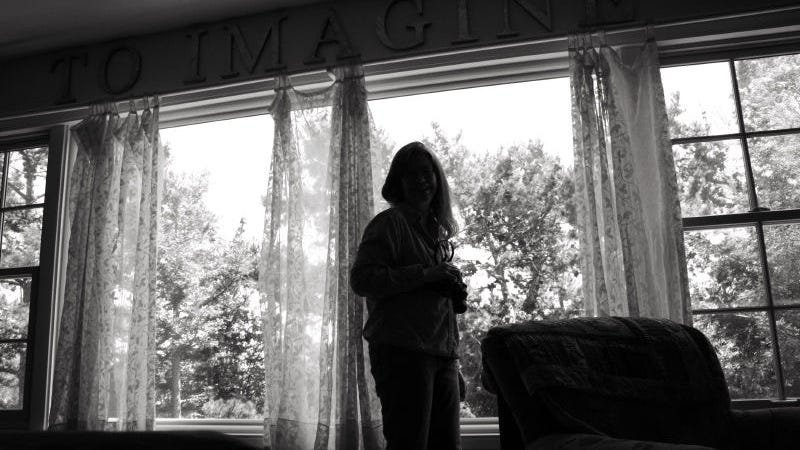
Funnily enough, I just ordered and received short blackout curtains for my short bedroom window. We have a high window that faces the back yard, and they’ve built houses behind us this past year. And added street lights. They’re so annoying to me at 3 am when I’ve slept just enough that my body thinks it could survive the day with that amount of sleep, but I need 2-3 more hours to really be at my best in a classroom of young children. So the curtains are here and I need to iron the packaging wrinkles out before I hang them.
I ordered blue ones. What could be the deeper meaning? My bedspread has blue stripes, but if eyes are the windows to the soul and I have blue eyes, does my color choice relate to that?
My favorite curtains were choices inspired by the book Joyful by Ingrid Fetell Lee. I got the sheers with polka dots, all in white. They do look happy!
I’m hoping my inside cat is grown enough that she will not climb the new curtains. Window coverings really changed because of her!!
Uncanny, or “shelf elf” to find that set of notes Amy!? Haha. Oh sidewalk oracles. I love your idea of drawing some patterns.